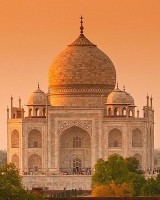Private guides and guided tours in Tajikistan
Private guides in Tajikistan
Private Guide in Dushanbe - Pamir
(Member Since 2009) Excursions/tous in the following cities: Dushanbe Languages: EnglishWe was named in honor of the majestic Pamir Mountains we so love to travel and explore. The idea to form a company appeared in 2004 when we decided that it is time to organize a travel agency and share our...

Tajikistan
Language: Tajik
Currency: Somoni (TJS)
Calling Code: +992
CAPITAL CITY OF Tajikistan: Dushanbe
LANGUAGE OF Tajikistan: Tajik
CURRENCY OF Tajikistan: Somoni (TJS)
COMMENTS ABOUT Tajikistan:
Tajikistan is a landlocked country in Central Asia
Cities : Dushanbe (capital), Khorugh, Qurghonteppa, Khujand
Best Places : Pamir, Karakol, Penjikent
Electricity : 220 V, 50 Hz
Calling Code : +992
Time Zone : UTC +5
Tajikistan has completed its transition from the civil war that plagued the country from 1992 to 1997. There have been no major security incidents in recent years, although the country remains the poorest in the region. Attention by the international community in the wake of the war in Afghanistan has brought increased economic development assistance, which could create jobs and increase stability in the long term. Tajikistan is in the early stages of seeking World Trade Organization membership and has joined NATO's Partnership for Peace.
CLIMATE OF Tajikistan: midlatitude continental, hot summers, mild winters; semiarid to polar in Pamir Mountains
RELIGION OF Tajikistan: Sunni Muslim 85%, Shi'a Muslim 5%, other 10% (2003 est.)
POPULATION OF Tajikistan: 7,163,506 (July 2005 est.)>>
ECONOMY OVERVIEW OF Tajikistan: Tajikistan has one of the lowest per capita GDPs among the 15 former Soviet republics. Only 5% to 6% of the land area is arable. Cotton is the most important crop. Mineral resources, varied but limited in amount, include silver, gold, uranium, and tungsten. Industry consists only of a large aluminum plant, hydropower facilities, and small obsolete factories mostly in light industry and food processing. The civil war (1992-97) severely damaged the already weak economic infrastructure and caused a sharp decline in industrial and agricultural production. Even though 60% of its people continue to live in abject poverty, Tajikistan has experienced steady economic growth since 1997. Continued privatization of medium and large state-owned enterprises will further increase productivity. Tajikistan's economic situation, however, remains fragile due to uneven implementation of structural reforms, weak governance, widespread unemployment, and the external debt burden. A debt restructuring agreement was reached with Russia in December 2002, including an interest rate of 4%, a 3-year grace period, and a US $49.8 million credit to the Central Bank of Tajikistan.



 French
French Spanish
Spanish Russian
Russian

